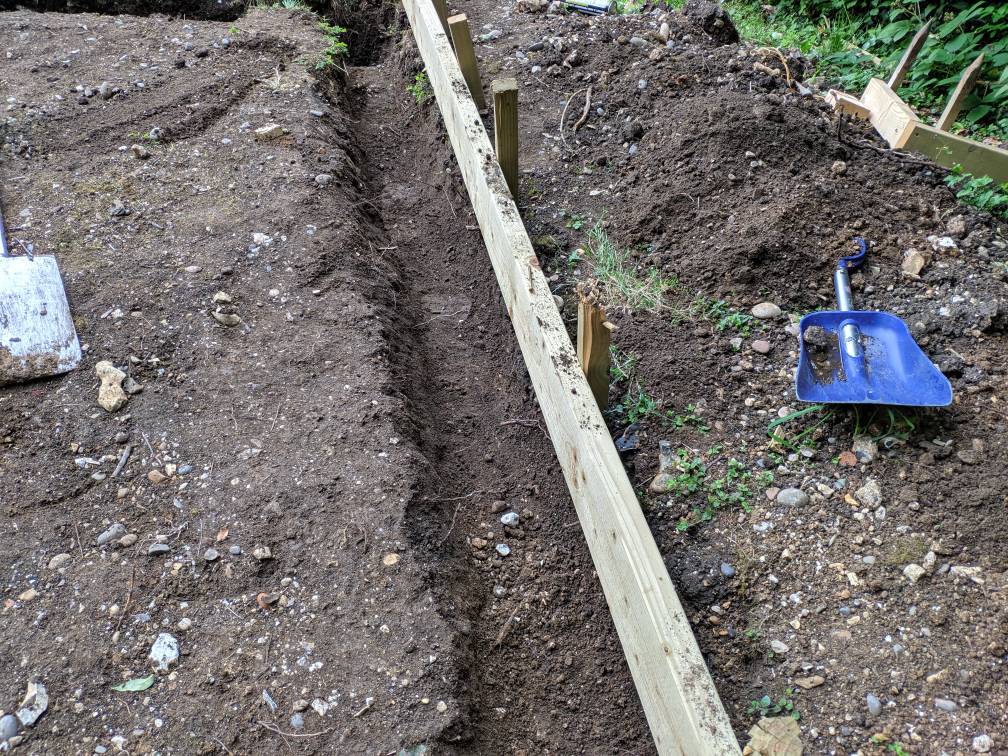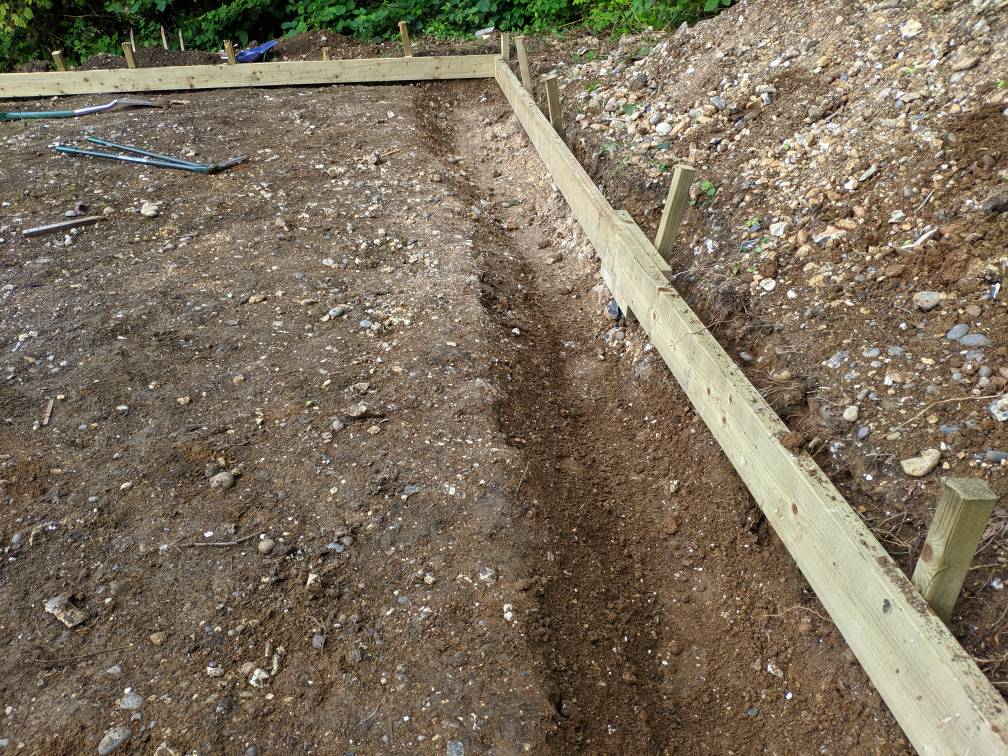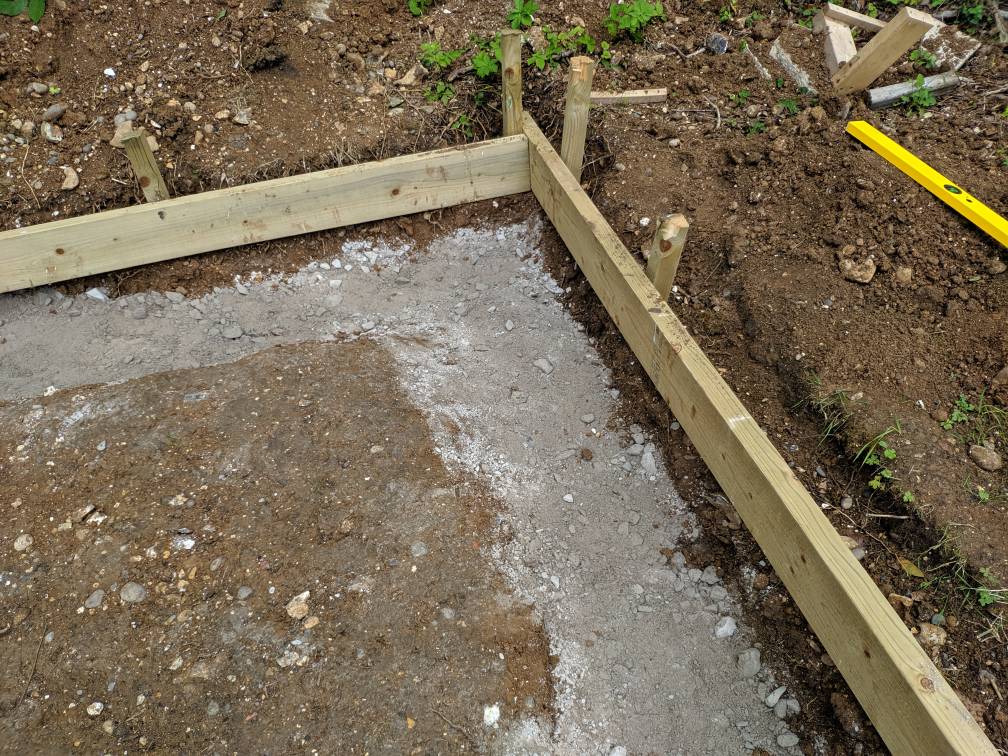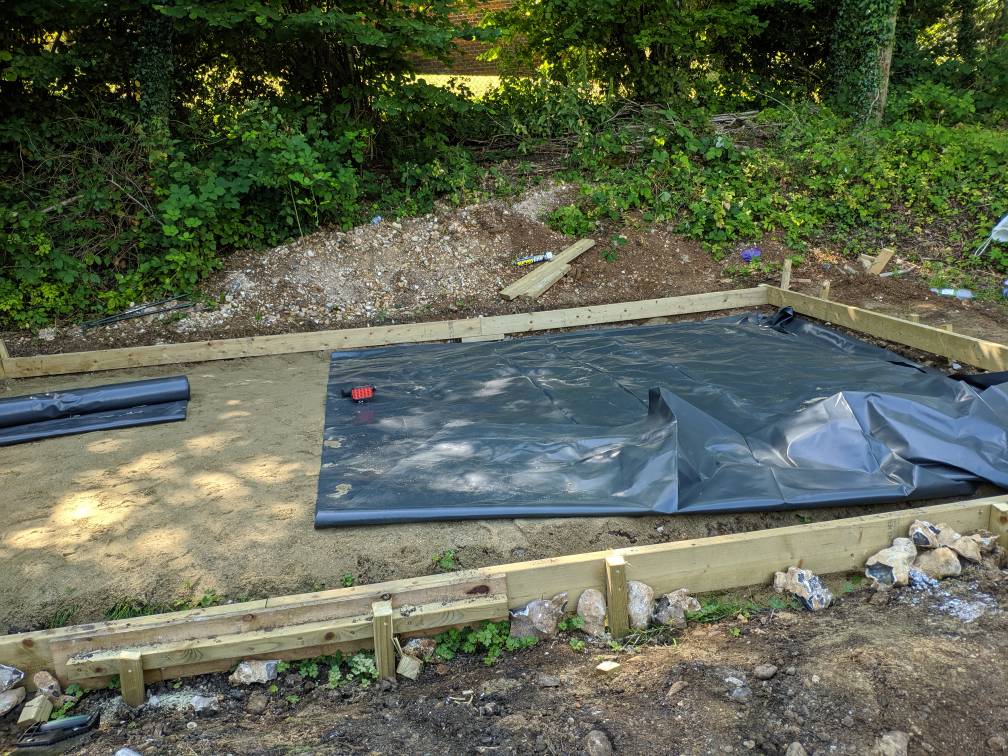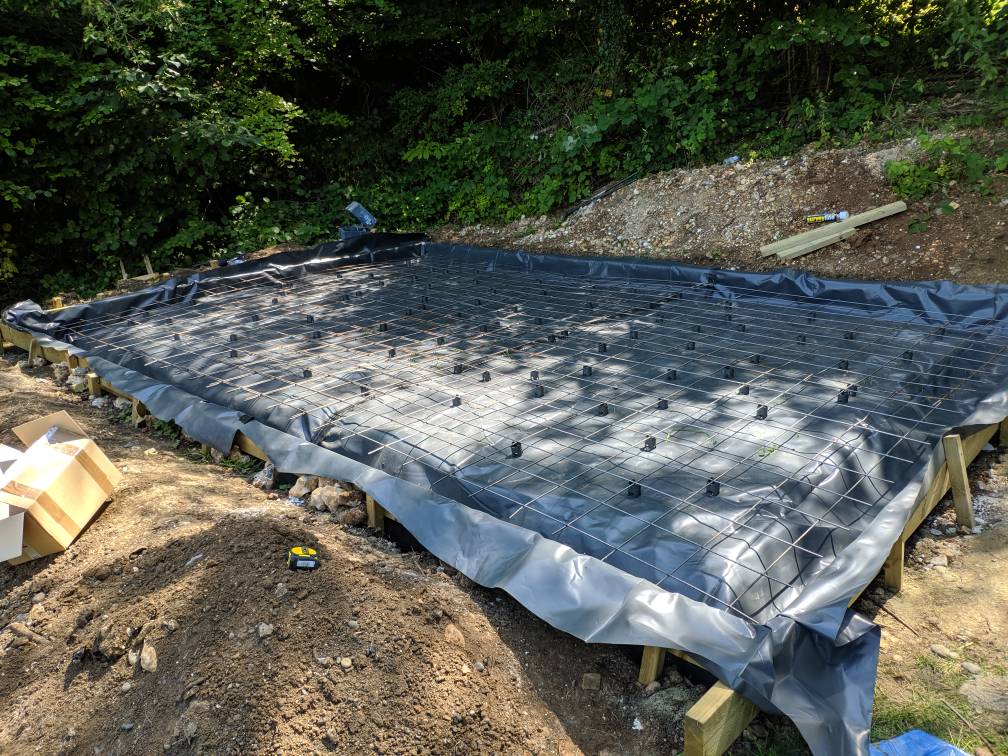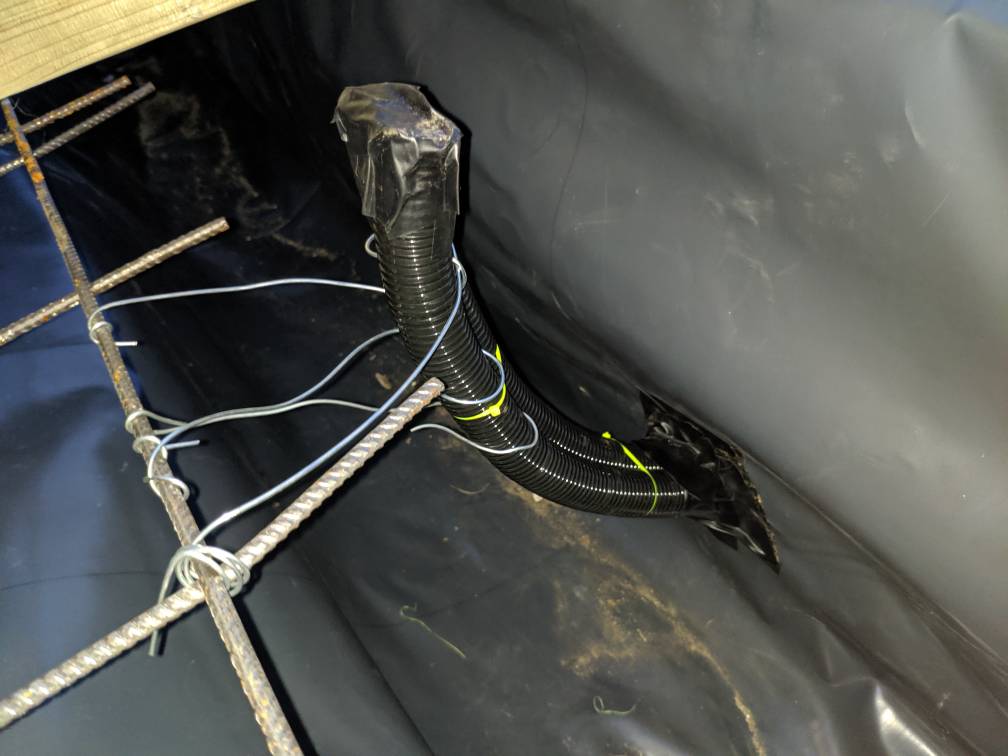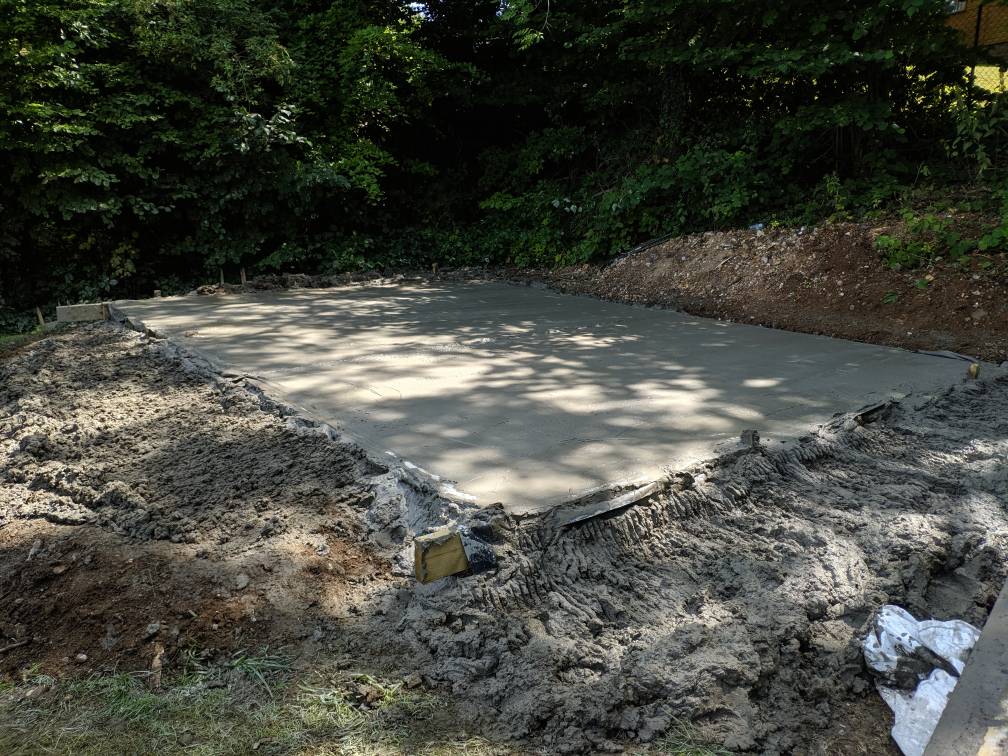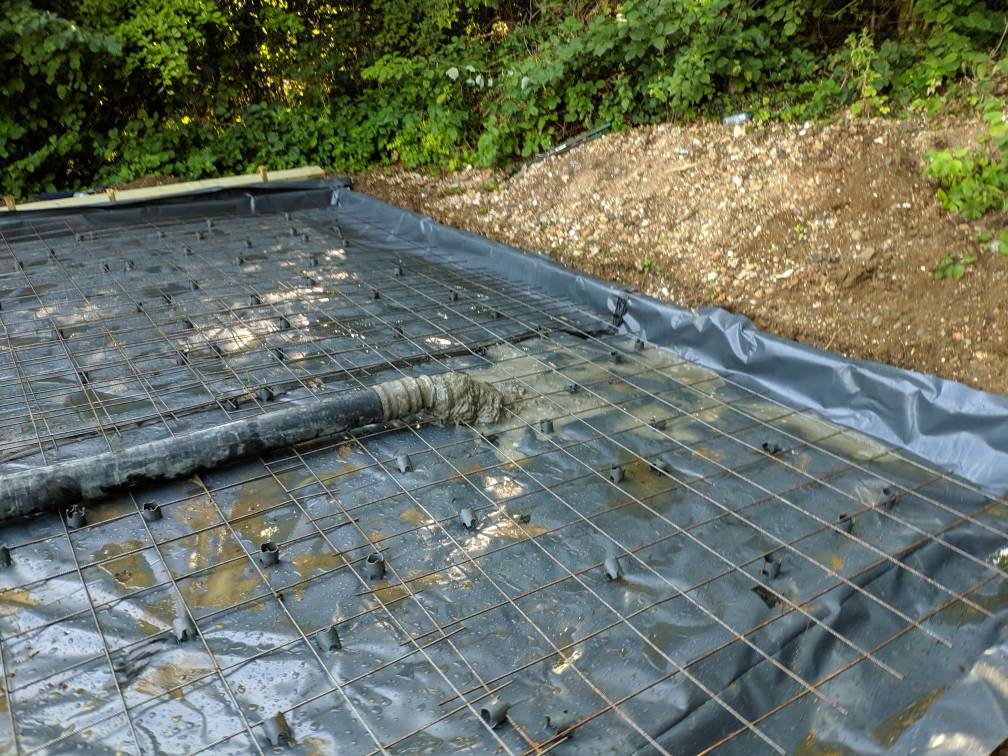MikeG.
Established Member
DomD":17ktaudm said:.........I am also looking into hiring some tools for preparation and the concrete pour:
- Concrete poker I can get for £32(+vat)
- Power float I can get for £80(+vat)
- 'Easy float' for £36(+vat).......
Poker......yes. You'll use it for less than 5 minutes, but it's worthwhile.
Power float......that's what I did for my workshop, and if I were being critical, I would say it possibly produces too smooth a finish. When pushing hard with a plane my feet can slip a little unless I have the right shoes on. If I had my time over again, I might have hand-floated it. Also, you have to wait until the concrete is precisely right, and that might mean 2 o'clock in the morning
Easy float.......too much skill involved unless you have done it before.
With your small base I would hand float. You work with a steel trowel, reaching in from the edges as far as you can, then carefully laying a board on the top of the concrete and kneeling on it to reach the middle of the slab. If you have a plastic float in your non-working hand you can use it to hold/ balance yourself as you go, resting on the concrete. Again, the critical thing is timing. Too early and you'll leave indentations in the surface of the concrete. Too late and you won't get it smooth. Just keep checking the concrete every half an hour to see how it is setting. Try the trowel..........if it raises water the concrete still isn't ready.
You do the floating after you have tamped the surface with a long straight-edge. You'll need wellies on, and you stand in the wet concrete, working backwards. Use both a tamping action (up and down) and a cutting action, where you go back and forth across the surface, cutting away the high points. Fill in low points from behind you as you go. As a beginner you'll need a straight piece of wood which is longer than the width of your base.
Pour it, tamp it, walk away.......clean up all your tools and boots at this point, using lots of water and a stiff brush. Go back regularly to check on the rate of setting, and judge when to start troweling up the surface. The following day, carefully spray the whole surface with water, and keep it constantly wet for a day or two. If you then start bricklaying, keep off the concrete. Work from the outside. Stack your bricks on the ground outside the concrete. Otherwise you'll likely generate powdering of the surface.
Now...get on with it!!




